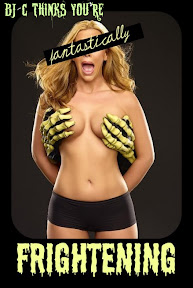As many of you may know, I am taking a horror genre class where we study on the mythological/analytical and theological aspects of vampires and zombies. During our studies we were required to view the first vampire film Nosferatu. I was so glad that I got to finally see the movie that launched the vampire sub-genre however; I was so tired from the previous night that I fell asleep during the film. Shame on me. This is why I can’t do a proper article on my thoughts but I do want to elaborate on something that was brought up in class by one of my classmates. When asked about how Nosferatu changed filmmaking he said (and I am paraphrasing): it was the first movie to really utilized the German expressionist aesthetic as a tool for suspense. In other words, it was the first film to really use shadows of the approaching antagonist as means of drawing suspense.
From films such as The Cabinet of Dr. Caligari and The Student of Prague, we can plainly see that German Expressionist films often use surreal and nightmarish scenery. Their buildings are often crooked and misshapen and the shadows are usually distorted but painted into the background. This is something that German Expressionist films are actually famous for and in modern times directors such as Tim Burton keep the style alive. However, Nosferatu is a little different because once Orlok comes off the boat he makes way to Ellen and that’s where we see his frightening figure, in shadow, climb up the stairwell.
The reason why it’s so different because it’s the first time that the shadow is moving and the first time where it’s used to create suspense. We know Orlok is there but we don’t see him… we just see his hunched over figure, his long talon-like figers and his eerie presence. All these combine for one shocking moment in the film. It’s very cinematic and somewhat nourish but it’s a tactic that we would see again in films like Nightmare on Elm Street, Child’s Play and Bram Stoker’s Dracula.
I’m aware there are other points in the film that this happens but I was, regretfully, asleep during these moments and woke up just in time to see the ending.






























 HauntedHouseChicago.com - Chicago’s Online Halloween Headquarters
HauntedHouseChicago.com - Chicago’s Online Halloween Headquarters


















1 comments:
Didn't Caligari have some interesting shadow work? Or am I just thinking of those great art deco posters?
Anyway, another relatively modern film that I think homages this classic scene (there must be dozens) is Tobe Hooper's THE FUNHOUSE. The scene in the air ducts under the funhouse with the Freak's shadow inching toward the cowering heroine. Total cinematic echo of that classic film.
Post a Comment